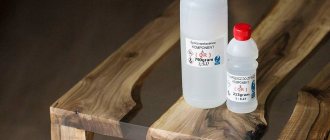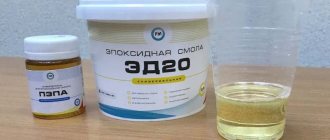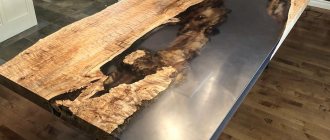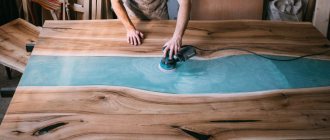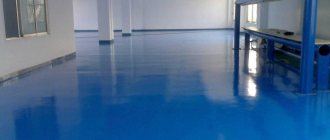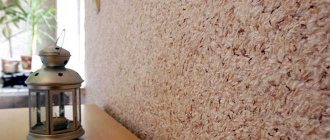This substance has been used since the mid-20th century as a universal composition for durable bonding of surfaces, known as epoxy adhesive. Gradually discovering the properties of epoxy, people expanded the scope of its application. Now it is in demand not only in construction and industry, but also for creativity. The use of dyes for transparent epoxy resin allows you to bring original design ideas to life.
Available means
Gel food colors
You can use some available materials as paints for epoxy resin:
- gel dyes for baking;
- ink from gel and ballpoint pens;
- watercolor paints with minimal dilution with water;
- soap dyes;
- eye shadow and nail powder;
- dry food coloring;
- printing inks;
- automotive enamels;
- alcohol solution of brilliant green;
- potassium permanganate crystals;
- crushed crayons and pencil leads.
The use of improvised materials as dyes does not always give a predictable result. Only professional colors give the desired effect - bright, beautiful and exactly matching the declared shade.
All about dyes for epoxy resin
When epoxy resin hardens, it becomes a transparent, colorless material and acquires the hardness of plastic. It is great for creating original, amazingly beautiful jewelry and accessories. It is quite natural that in most cases a creative idea requires painting the resin in different colors. Thanks to special techniques, you can make interesting color transitions and play, create an imitation of any texture (wood, fabric, stone, etc.), give the product a mysterious radiance or luxurious shine.
Content
Types of dyes for epoxy resin and their features
For coloring, you should use special pigments for epoxy resin - colors, with which you can achieve various artistic effects. They are fully compatible with the resin, mix well with it and do not change its properties. Dyes are available in the form of pigment paste and powder, light and fine, like powder.
Single-color pigment pastes
Due to the high concentration of pigment, the paste perfectly covers other colors and is used sparingly. It is used to paint a product a deep, even color. The more paste you add to the resin, the richer and darker the shade you will get. The maximum amount of paste is no more than 10-15% of the total resin volume. The dye mixes quickly and easily and has a uniform consistency without lumps. If you wish, you can combine several colors to get a new shade.
Clear Toners
Transparent colored dyes give shades of different saturation and at the same time keep the resin completely transparent. The more drops of toner you add to the resin, the higher its concentration and the richer the shade.
Pop-up pigments
Pop-up pigments create the effect of liquid, moving color on the surface of clear or colored resin. Metallic pigments are especially beautiful - silver, gold, bronze, copper. The color looks alive, shining, shimmering stains and shimmers appear on the surface.
Fluorescent (neon) dyes
As a rule, these dyes are distinguished by bright acidic shades. Compared to other pigments, they are the brightest and most saturated. They create spectacular contrasts and give the product originality. Fluorescent dyes tend to glow when exposed to ultraviolet light.
Compositions with phosphor (Glow in the dark)
The phosphor has the ability to accumulate any light, due to which it begins to emit a soft glow in the dark. Depending on the composition, the dye can produce a colored neon shimmer or a slightly greenish shimmer. Unlike phosphorus, which produces a similar effect, phosphor is an absolutely safe, non-toxic substance of organic origin. A pigment with a phosphor can turn even a not very successful product into something amazing.
Matting dyes
These dyes contain special substances that remove the glossy shine. The color does not lose its saturation and depth and at the same time looks slightly muted.
Metallic effect
The dye is a very fine powder. When added to resin, it imparts a soft metallic sheen to copper, gold or silver. Usually it sinks in resin, but since it is visible through its thick layer, the color acquires depth, begins to shimmer, and plays in the rays of light. If you add mother-of-pearl to metallic, you get a smoky effect.
Pigment with mother-of-pearl effect
This pigment gives the product tenderness and a certain mystery. It is evenly distributed in the epoxy resin and creates subtle shimmers when illuminated. With a high concentration of pigment, you can get pearlescent stains, like on the inside of a sea shell. With the help of pearlescent pigment, you can also create three-dimensional images and multi-layered designs in the thickness of the resin.
Chameleon pigments
Thanks to these dyes, the original color changes depending on the angle at which you look at the product or from which side the rays of light fall on it. Just imagine how impressive decorations, panels and other products will look with them. By mixing chameleons with other dyes, you can achieve unusual shades that cannot be obtained in other ways. It is best to use chameleon pigments on dark products: this is how the effect is most pronounced.
Glitters
Glitter dyes give the product a brilliant shine. Usually they are added to a resin already mixed with a hardener and, as it were, buried in it. They are usually used to lay out an ornament or other design. Large particles reflect light rays and produce a bright shine. If you take small particles of glitter, you can create a sparkling effect.
Holographic pigment
The dye creates a voluminous, deep color that shimmers in all shades, like a magical rainbow. The smaller the particles, the smoother and richer the transition between shades.
Tips for using colors
To prevent incorrect painting, it is important to follow the technology for mixing color and resin. Rules to follow:
- Use compatible materials - gradually mix the hardener and pigment in a test portion; if there are no undesirable effects, you can switch to the main mass.
- Make sure that there is no water in the paint, as it can ruin the resin product, give it a yellow tint or cause cracks.
- The maximum weight of colors in an item is 7% of the total weight of the resin; if you add more, the item will turn out soft. Oil, nitro and alkyd paints can be added up to 10% of the total weight.
Valera
The voice of the construction guru
Ask a Question
You need to work quickly with epoxy resin to which color has been added. It hardens within a few tens of minutes. The smaller the product, the more active the process.
Safety regulations
When working with dyes, it is important to follow safety precautions:
- many colors emit aggressive vapors during the polymerization process, you need to use a respirator and gloves;
- It is advisable to ventilate the room during work;
- if the composition gets on the skin, you need to clean it with alcohol and wash it with soap;
- mix the solutions in disposable containers, which are then thrown away;
- The ambient temperature should not be below 22 degrees and above 25.
Do not leave exposed paints unattended and do not allow pets or children to come into contact with them.
Using dyes for tinting epoxy resins - rules and recommendations
Epoxy resin is used everywhere - in construction, repairs, for the manufacture of adhesives, self-leveling floors, and in various industries. In recent years, making epoxy-based jewelry - bracelets, beads, brooches - has become increasingly popular.
- The need for resin coloring
- Specialized paints
- Tinting with improvised means
- Coloring tips and proper technique
In general, this wonderful material is suitable for realizing the most daring ideas; moreover, it can be painted in a variety of colors. The dye for epoxy resin can be purchased at the store or made with your own hands using available materials.
The need for resin coloring
Epoxy colorant, or pigment concentrate, is a special product for coloring resins that changes its base color. Tinting is done for so-called jewelry resins - epoxies intended for creativity.
Typically, such materials have absolute, crystal transparency, which allows painting in the most original colors. You can also add shine to the product, make color transitions, and play.
Specialized paints
In order not to worry about the coloring result, it is better to use products specifically designed for this. They are sold in craft stores, for artists, and are most often acrylic. Epoxy paint can be of this type:
- single-color - almost all known paint colors are available for sale (blue, yellow, gray and many others, even black and white);
- fluorescent (with phosphor) - can glow in the dark thanks to special components, can be colored or colorless;
- tint matte - gives the epoxy a noble matte finish, which allows you to create stylish jewelry and other products;
- mother-of-pearl or metallic - the finished item will shimmer beautifully;
- with sparkles - designed to give a sparkling, festive look to products.
Popular manufacturers
Among the brands that have gained trust are American and European manufacturers, as well as several Russian products:
- Poly Max Dream . The dyes are produced as a set, which includes: white, blue, green, pink and red fluorescent color.
- Crystal . The company produces paints and accessories for painting, including for creating crafts from epoxy resin. In total, the collection includes 50 shades. Packaged in 10 and 30 g. Large jars cost from 290 rubles, and small jars from 100.
- Polymer - O. _ The company produces concentrated paste-like colors. They are expensive - from 500 rubles per 50 g, but they are very economical in consumption. Some pastes contain fluorescent additives and phosphors. In the catalog you can find pearlescent pastes, as well as separate proposals for working with large areas - tins of paints of 1.6 kg.
- MICA Rainbow . Budget Chinese paints in the form of pigment powder. Unlimited choice of colors and price from 50 rubles per package. Contains natural mica and is environmentally friendly.
- Reactint . Innovative paints for plastic, polyurethane and epoxy resins. Available in concentrated liquid form. Very economical - 0.1% is enough to achieve rich color. The price of paints is quite affordable - 350 rubles for 15 g.
- MG Epox Color M. Colors for liquid epoxy resin, packaged in 10 g bottles. Cost from 120 rubles. There are many shades, including pearlescent. Metallic is represented only in silver.
- ArtLove . A popular brand that produces dyes for resins of its own production. Sold in 5 ml flasks, costs from 150 rubles. The color palette is blue, red, green, yellow and purple.
- EpoximaxX . Specializes in the production of jewelry resins and dyes. Produces highly concentrated, odorless products. Can be used to create matte and transparent shades.
- A relatively inexpensive dye for epoxy resin is “ Epoksikon ”. It is available in 10 g jars and costs from 120 rubles excluding discounts. There are compositions with mother of pearl. Environmentally friendly and clean material.
How to tint epoxy resin
Epoxy resin is a common and in demand material. It is actively used in many areas of industry. Epoxy is one of the favorite materials for designers. In creativity, a special jewelry epoxy is used, which remains transparent after polymerization. But according to the designer’s plan, the synthetic material can be given any shade. You just need to know how to choose the right dye for epoxy resin.
When does it become necessary to paint epoxy resin?
Color for epoxy resin is a specialized product that completely changes the color of the resinous substance. With a skillful approach, the resin can be given unique transitions, shimmers, and can be made luminous or pearlescent. By adding a certain dye, uniquely beautiful souvenirs, decorations and household items are obtained.
Special dyes are used to obtain different shades of resin.
How to paint epoxy at home
Knowing how to tint epoxy resin, the home craftsman has great opportunities. After all, with the help of dyes, even a boring souvenir can be turned into a masterpiece. To work with a resinous substance, you can use various dyeing methods, using both professional pigments and handy home remedies.
Dye selection
Craftsmen have a large selection of different dyes suitable for epoxy. Paint for epoxy resin can be specialized (professional). You can also experiment with different home remedies.
Advice. When one drop of dye is added, the resin becomes translucent. To achieve a bright color, the substance is first painted white, and then the selected color is added.
Specialized paints
A professional pigment created specifically for working with epoxy, it meets all safety regulations. It is easy to work with such dyes; you just need to follow the included instructions. Such dyes are mainly produced on the basis of acrylic. Specialized resin dyes are of the following types:
- Single color. Presented in a rich palette of all possible shades.
- With phosphor. Fluorescent paints give epoxy the ability to glow in the dark. Such dyes are ideal for creating original night lights.
- Matte (tinted). Gives the substance a velvety matte finish. They are best used when creating fashion jewelry.
- Pearlescent (or “metallic”). It creates beautiful shimmers, and if sparkles are added to the color, the final work will have a magnificent festive look.
Depending on the volume of added dye, you can achieve a different type of souvenir. If you tint a resinous substance with a small amount of pigment, the resin turns out translucent. The more paint added, the richer and brighter the substance turns out.
Advice. When choosing professional paint for epoxy, choose a color from the same manufacturer from which the resin itself comes.
Such pigments are produced in various packaging and come in the form of powder or paste. Their prices are quite affordable. And by using different colors when working, you can achieve a fantastic result.
Coloring with improvised means
You can color the resin with your own hands, using materials that are always available in the house. But keep in mind that the dye used must be water-based. What you can use:
- Pen ink. But be aware that ballpoint pen pastes have a curious feature - when added to resin, they can change color unpredictably. For example, reds turn brown. When coloring, it is better to take pastes from gel pens - they give the substance a brighter and more predictable shade.
- Oil paints for artists. They are painted first. They are introduced into the resin, and only then a hardener is added to it.
- Dyes used to color polymer clay.
- Various representatives of alkyd dyes. This includes automotive nitro paints.
- To achieve a matte black finish, use activated carbon powder or printer ink.
- Pigment coloring powders used in construction and finishing works. Try alcohol-based stains as well.
- You can even use baby powder, talc, and cosmetic powder as paint for epoxy. Crushed pencil leads for drawing will also come in handy.
- Pastel artistic paints will add a matte finish to the resinous substance.
- Using tooth powder, kaolin or chalk, the resin becomes white.
- Green paint will also work if you plan to give the resin a bright green color.
- Stained glass dyes can also be used successfully.
Where to buy phosphor?
Phosphor
(Photoluminescent pigment), Aqua glow, 100 gr.
— buy
in the OZON online store with fast delivery
Interesting materials:
Why do orchid leaves lighten? Why do the leaves of the money tree turn dark? Why does orchid leaves lose turgor? Why do aloe leaves have dry leaves? Why does anthurium grow small leaves? Why do anthurium have dry leaves? Why do azalea leaves fall? Why do balsam have light leaves? Why do the tips of garlic leaves turn yellow? Why do the tops of garlic leaves turn yellow?
